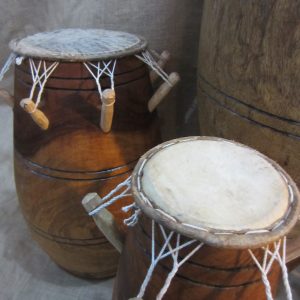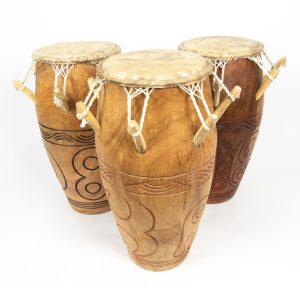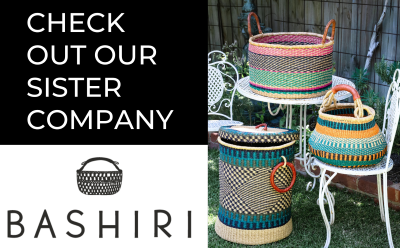Do you know all of these Hand Drums?
Bougarabou are a cousin of the djembe, with a very distinct and mellow soundscape. V line shape skinned cow hide with rich, deep sounds.

Highly addictive goblet shaped drum of the Mandé Empire. A djembe or jembe is a rope-tuned skin-covered goblet drum played with bare hands, originally from West Africa. According to the Bambara people in Mali, the name of the djembe comes from the saying “Anke djé, anke bé” which translates to “everyone gather together in peace” and defines the drum’s purpose.
Ewe drumming is very diverse and is played in many slightly different ways. For example, an Ewe musician from Togo may play a piece or instrument slightly differently from the way a Ewe from Ghana does. The Fon people of Benin are another example of this variation. They construct their villages, towns, and cities on water, and because of this, they do not play the same upright drums other Ewe play. Instead, they place large gourds on water as drums.
A traditional instrument of the Ga people of Greater Accra (Ghana), Kpanlogo are traditionally played by an ensemble of drummers, often in sets of six Kpanlogo drums of varying size. In contemporary ensembles, djembes, dunun, shakers and bells also accompany the Kpanlogo.
The Sabar, which originated with the Serer people, is a traditional drum from Senegal (also played in the Gambia). It is generally played with one hand and one stick and is a very loud drum. A Sabar ensemble is an impressive sound, and the music and dance is often played at a frenetic speed.
You can check out drums and loads more on our online shop.





